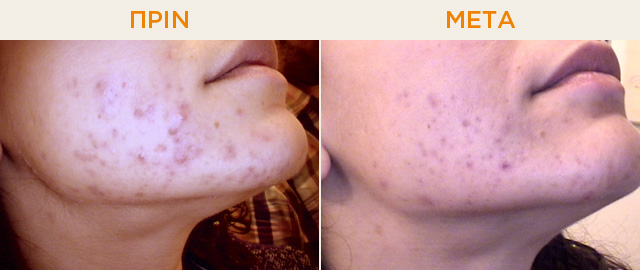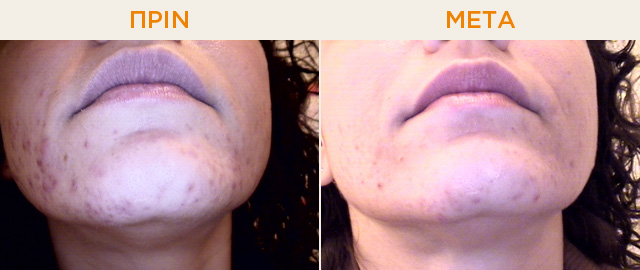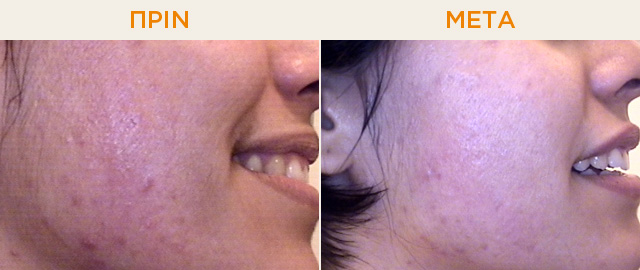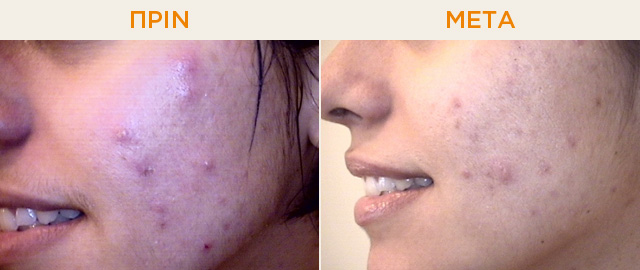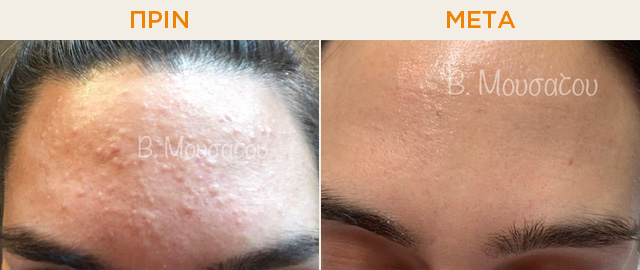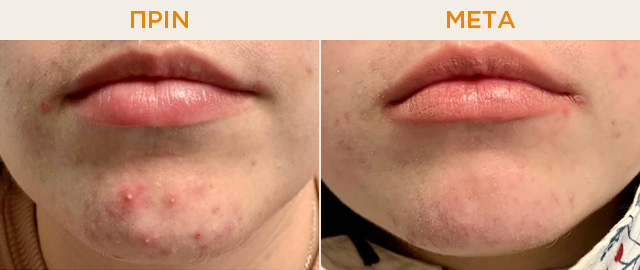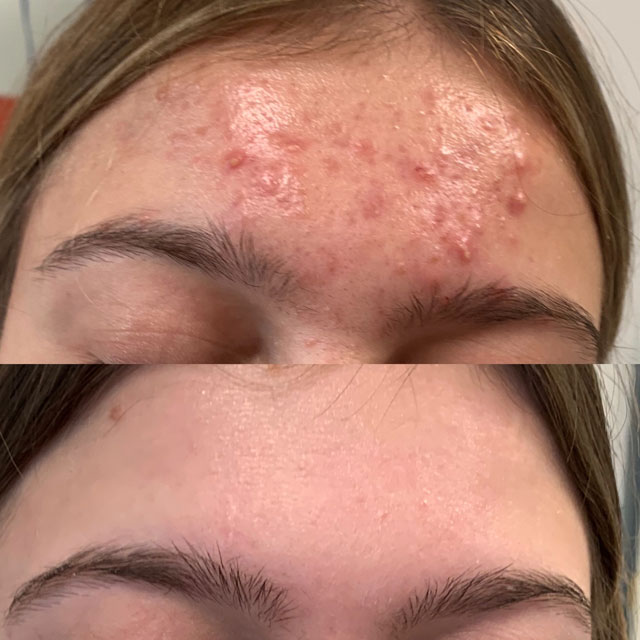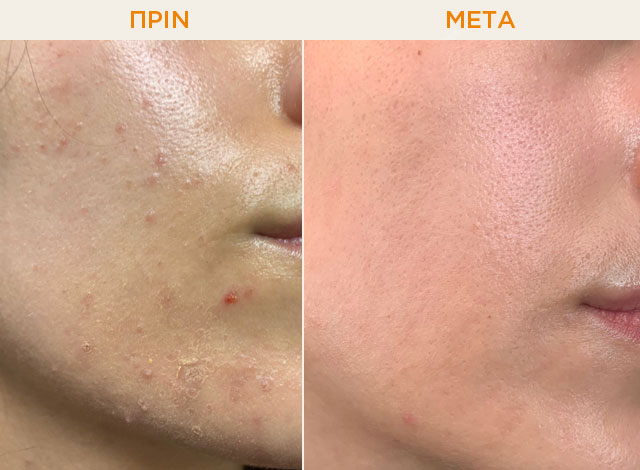Acne is not, as many believe, a feature of adolescence. It occurs more often at these ages but may first appear at any age up to 40 or to be continued beyond that age.
Causes of Acne
The etiology of acne is not fully known, but many factors are etiologically involved in its occurrence. Heredity, sebum overproduction, Propionibacterium acnes (P. acnes), hormonal disorders and the "blockage" of sebaceous glands duct by skin cells are reasons that contribute to its creation. The face, upper chest and back are mainly affected. It is a problem that causes severe psychological stress especially at younger ages and tends to relapse. The factors that are associated with acne exacerbation are stress due to increased cortisol production which increases sebum production, hormonal fluctuations, increased sweating. The sun, in most cases, has a positive effect on acne, while there is no positive or negative correlation with certain foods, although a diet rich in fats may aggravate the condition.
After the end of each successful treatment, it is recommended a maintenance treatment with special products and often a treatment of the scars that have been caused. Women with acne often try to cover up the problem rather than deal with it. Adolescents intervene trying to ’break’ pimples with the risk of infection or scarring. The help of a dermatologist who will recommend the appropriate treatment and sometimes will look for the cause when there is a hormonal disorder (polycystic ovaries, congenital adrenal hypertrophy, and thyroid dysfunction) is absolutely necessary.
Depending on the clinical picture, there is a gradation in the severity of acne and each case is treated differently. In severe cases, there is a risk of scarring.
Types of Acne
The types of acne vary depending on the form. Whereas, in many cases, in the same patient may coexist characteristics from all the types of acne. These are the comedonal acne, the pustular acne and the cystic acne which is the most severe type. On the comedonal acne, the open comedones (blackheads) and the closed comedones (whiteheads) (pin head-sized skin colored trapped sebum) predominate. In the pustular form the papules (red pimples without pus) and the pustules (with pus) are the main feature, while in the cystic acne the deep, painful and persistent cysts are the main characteristic.
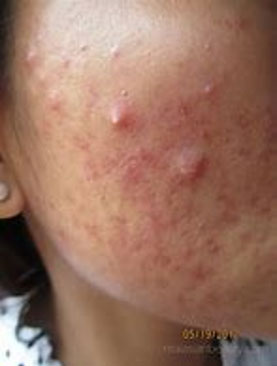 Βλατιδοφλυκταινώδης ακμή
Βλατιδοφλυκταινώδης ακμή
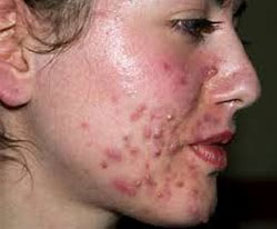 Κυστική ακμή
Κυστική ακμή
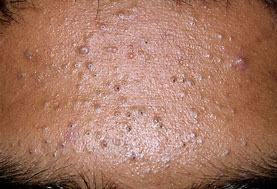 Φαγεσωρική ακμή
Φαγεσωρική ακμή
How to Treat Different Types of Acne
The suggested treatments varied depending on the type and severity of the acne, the patient’s age and the year’s season. At younger ages and for mild acne, topical treatment with cleansing soaps, creams that control oiliness, topical antibiotics and retinoids, azelaic acid and benzene peroxide is usually recommended. There are also combinations of the above substances in one product. Each dermatologist suggests the appropriate product accordingly and often the treatments are alternated depending on the season and the response to the treatment.
In mild and moderate cases, the intake of a special dietary supplement for 3 months may be helpful.
In comedonal acne, the extraction of sebum is very helpful. This procedure should be performed by a dermatologist. The treatment is followed from prescription that the patients must follow at home to prevent recurrences.
In more extensive or more severe types of acne, topical treatment with oral antibiotics is combined. It is emphasized that the effectiveness of antibiotics after stopping the treatment that lasts 4-6 months is around 50%. Antibiotic treatment is not preferred as the patient loses time from starting the most effective retinoid treatment and in addition resistant germ strains are created.
Oral retinoid is the most effective treatment for acne. The efficacy of this treatment is up to 80%. It is recommended in severe acne or chronic cases of acne or when we need clearance with the least chances for recurrences. The patient needs to be monitored closely by a dermatologist. The treatment is dosage dependent on the patient’s weight and is administered during periods without intense sunlight due to the photosensitivity that it causes. Alcohol and strenuous exercise are prohibited during treatment. It is indicated for ages 12 years old and over and pregnancy is strictly prohibited during treatment (4.5-8 months depending on the daily dose). The dryness of the skin and mucous membranes are a common side effect, while blood (hematological) and biochemical disorders are less common, mainly due to an increase in transaminases (enzymes indicative of liver function), cholesterol and triglycerides. The side effects of treatment (fatigue, back pain, menstrual disorders, exacerbation of acne (acne breakouts) in the first months) usually occur in higher doses and therefore we prefer to supplement the final dose by giving a low daily dose for a longer period. However, in these few cases the disorders are reversible and disappear completely after stopping treatment. In some cases with severe acne from young age it is necessary to repeat the treatment.
When there is a hormonal disorder such as polycystic ovary syndrome, treatment with contraceptives or hormones also helps with acne.
Other treatments, when oral treatments are contraindicated or the patient does not want them, are with acne-specific peelings, lasers and photodynamic therapy. However, the effectiveness is lower than that of isotretinoin.
Especially for the summer season, acne patients should keep in mind the following:
Sun and sea water often help with acne, but be careful not to overexpose yourself to it, as overexposure can make it worse. Also, acne gets better during summer because of the good mood and lack of stress during the holidays.
Acne Treatment with Blue Light
Acne is a chronic skin condition and often treatments take a long time to treat it.
Blue light treatment is very effective for inflammatory acne. The blue light system is a light source with a wavelength of 420 nanometers. It works by "sterilizing" the skin from the Propionibacterium acnes (P. acnes), killing it, while it also acts on the sebaceous glands, reducing sebum production and pores size.
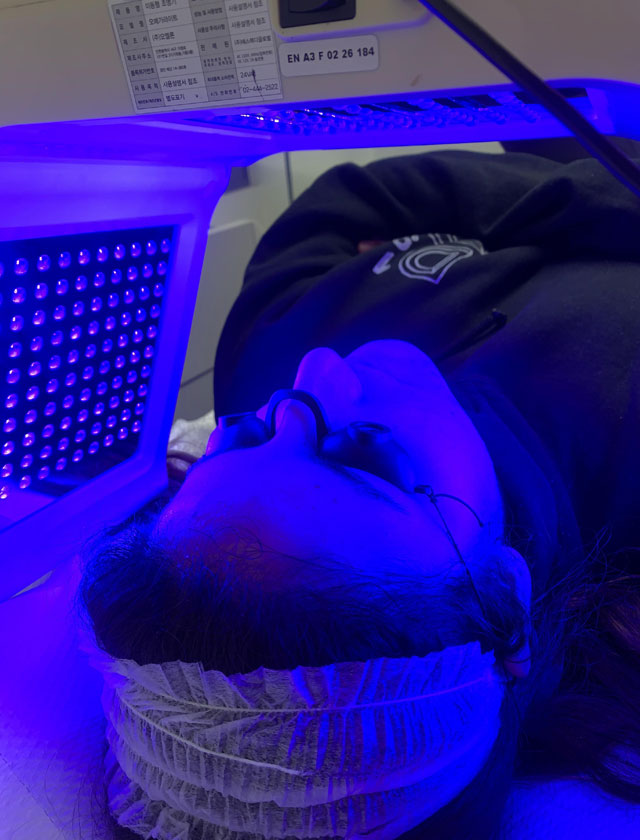
This is a very fast treatment as in 3-4 sessions there is over 80% improvement of inflammatory acne. More severe types of acne (cystic acne) improve but not as dramatically. The sessions take place every week and so in about a month the acne disappears while improvement is obvious from the very first session.
The results of the blue light treatment should be followed by home prescription medication. The treatment is fast, painless and without irritations. Patients choose this treatment when they want immediate results or when other treatments are contraindicated.
Post Acne Scars Treatmen
Unfortunately, many times, despite the successful acne treatment, acne marks or scars remain that aesthetically annoy the patient.
Some of them are in the form of red marks and others in the form of atrophic or depressed or ice-pick scars.
The treatment of marks and scars is applied after the complete clearance of acne.
Repetitive treatments with fractional laser CO2 or mesotherapy with Dermapen may improve the red marks, the texture of the skin and the appearance of the pores. In addition, exfoliating peelings may also improve the skin.
However, when we have acne scars, depending on their type, it may be necessary to use subcision with a special needle and then fill them up with low-viscosity hyaluronic acid. Autologous mesotherapy is another technique which may be helpful for scars especially combined with other treatments.
